Top 5 articles regarding nature biomimicry in 2010
 If nothing else, the world around us had much more time to shape itself to the current layout we can see around us. By learning from nature, and implementing those ideas, we can improve the efficiency of current designs and technologies, or even come up with new technologies just by mimicking nature. Biomimicry has been applied in all the areas of our website, from robotics, gadgets and architecture design, to various implementations in emerging technologies.
If nothing else, the world around us had much more time to shape itself to the current layout we can see around us. By learning from nature, and implementing those ideas, we can improve the efficiency of current designs and technologies, or even come up with new technologies just by mimicking nature. Biomimicry has been applied in all the areas of our website, from robotics, gadgets and architecture design, to various implementations in emerging technologies.
Here are the 5 most popular articles regarding biomimicry in 2010:
5. Biomimicry of butterfly wing scale structure could cut bank fraud
The colors displayed on beetles, butterflies and other insects have long fascinated both physicists and biologists, but mimicking nature’s most colorful, eye-catching surfaces has proved elusive. This is partly because rather than relying on pigments, these colors are produced by light which reflects off microscopic structures on the insects’ wings. Cambridge scientists have discovered a way to mimic the vivid and beautiful colors found on the wings of tropical butterflies in order to lessen the frauds in the future and enhance the security in the printing industry.
Interestingly, some butterflies may also be using their colors in order to look diverse to their potential mates and predators. When seen with the right optical equipment, the patches on butterfly wings appear bright blue, but with the naked eye they appear green. If its eyes see fellow butterflies as bright blue, while predators only see green patches in a green tropical environment, the butterfly has advantage to hide from.
4. Spider hairs biomimicry for hydrophobic surfaces
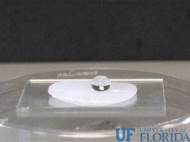 Spiders use these hairs to stay dry or avoid drowning. By mimicking spiders, engineering researchers from the University of Florida (UF) have created what they call a “nearly perfect hydrophobic interface”. By using plastic to reproduce the shape and patterns of the minute hairs that grow on the bodies of spiders, the researchers have created one of the most water-repelling surfaces yet.
Spiders use these hairs to stay dry or avoid drowning. By mimicking spiders, engineering researchers from the University of Florida (UF) have created what they call a “nearly perfect hydrophobic interface”. By using plastic to reproduce the shape and patterns of the minute hairs that grow on the bodies of spiders, the researchers have created one of the most water-repelling surfaces yet.
Wolfgang Sigmund, a professor of materials science and engineering at the UF, began working on the project about five years ago after picking up on the work of a colleague. Close-up photographs of water droplets on dime-sized plastic squares show that the droplets maintain their spherical shape, whether standing still or moving. Sigmund said his surface is the first to shuttle droplets with no tail. The surface works equally well with hot or cold water, and Sigmund claims a variation of the surface also repels oil – a first for the industry.
3. Biomimicry of fish lateral line for future robots and submarines
The lateral line is a hydrodynamic imaging system found in fish and aquatic amphibians which enables them to accomplish a variety of underwater activities such as localization of moving prey or predators, detection of stationary objects, schooling without colliding and social communication. It consists of numerous hair cell sensors called neuromasts which are distributed all over the fish body, with many of them situated on the surface of the skin and others in sub-epidermal canals.
Developed by Douglas Jones, from the University of Illinois, along with Chang Liu from Northwestern University, the artificial lateral line (ALL) consists of a 3-D system of biomimetic neuromasts (BNs) wrapped around a cylinder. A man-made lateral-line system can be indispensable for underwater vehicles and robots, enabling new methods of exploration, interaction and communication.
2. Sea shells inspired a new material made of chalk and polystyrene
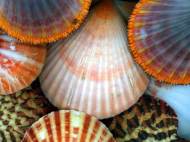 The sea shells are strong and resistant to fracturing, because the calcium carbonate is combined with proteins which bind the crystals together, like bricks in a wall, to make the material stronger and sometimes tougher. A team of materials scientists and chemists from The University of Manchester and The University of Leeds have taken inspiration from sea shells found on the beach to create a composite material from dissimilar ‘ingredients’.
The sea shells are strong and resistant to fracturing, because the calcium carbonate is combined with proteins which bind the crystals together, like bricks in a wall, to make the material stronger and sometimes tougher. A team of materials scientists and chemists from The University of Manchester and The University of Leeds have taken inspiration from sea shells found on the beach to create a composite material from dissimilar ‘ingredients’.
They have successfully reinforced calcium carbonate, or chalk, with polystyrene particles that are used to make drinks cups. The researchers developed an effective method of combining calcite crystals with polystyrene particles which makes the material more ductile compared to its original brittle form.
1. NOMFET – an organic transistor that mimics a brain synapse
Scientists have great expectations that nanotechnologies will bring them closer to the goal of creating computer systems that can simulate and emulate the brain’s abilities for sensation, perception, action, interaction and cognition while rivaling its low power consumption and compact size. Nanotechnology researchers in France have developed a hybrid nanoparticle-organic transistor that can mimic the main functionalities of a synapse.
Nanoparticle Organic Memory Field-Effect Transistor (NOMFET) has opened the way to new generations of neuro-inspired computers, capable of responding in a manner similar to the nervous system. Aside the potential application which would increase the performances of neural-network computing circuits, due to nanosize of these particles and molecules, the NOMFETs show great potential for nanodevice fabrication.

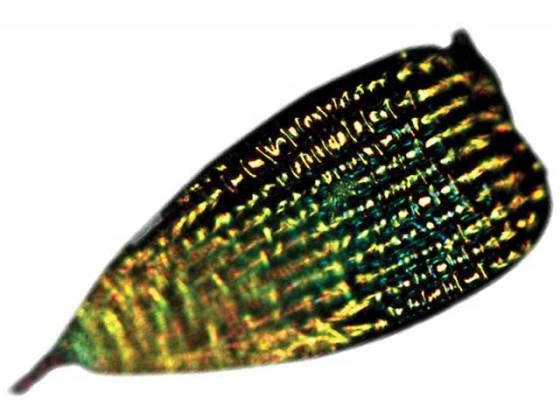
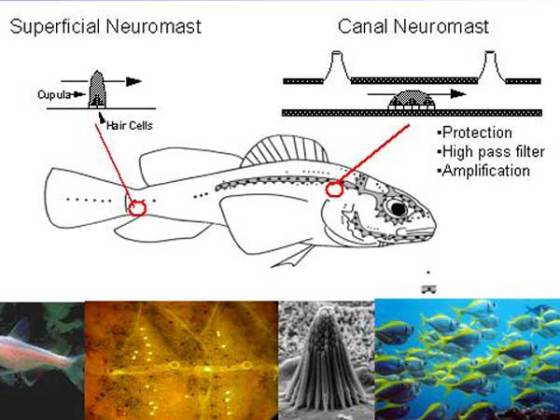
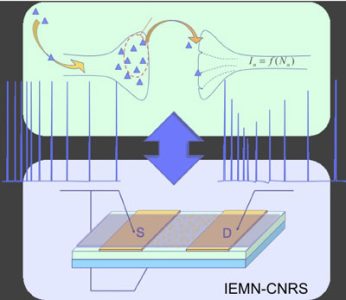








Leave your response!